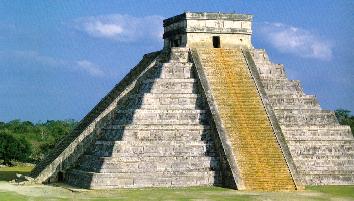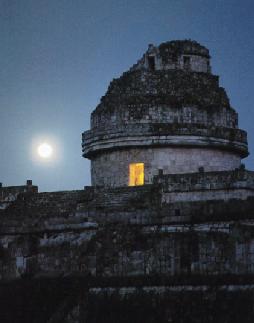|
| |
The History of the Mayans

The Great Mayans
The area in which the Maya civilization developed
includes three different regions: (1) the southern region, a
mountainous highlands region which includes eastern Chiapas
in Mexico, parts of Guatemala and western El Salvador in
Central America; (2) the northern region of low-lying Yucatán,
Campeche, and Quintana Roo; (3) the densely forested central region that
reaches from the states of Tabasco and southern Campeche in Mexico,
across the Petén region in northern Guatemala to include Belize
and the western area of Honduras.
The Maya were the most advanced civilization in pre-Spanish
Mexico. The Mayans built hundreds of ceremonial centers and
cities, complete with great plazas, palaces, and pyramids, all
without the use of metal tools. The Mayans also created masterpieces
of sculpture. As impressive as these accomplishments were, the
most remarkable achievements of the Mayans were in the
fields of mathematics, astronomy, hieroglyphics writing,
and calendrics. Using only fixed lines of sight to study the
movements of the moon, planets, and the sun, the Mayans were
able to make accurate astronomical observations. As a result,
they were able to devise several calendars, one which is
more accurate than the 365 day calendar we use today!

The basis of the Solar/Civil Calander was the 360 period called
Tun. The 360 days were divided into 18 months called Uinal,
each had 20 days each, 5 days called Uayayeb (meaning the nameless
month) were added. The 5 day Uayayeb was considered very unluckly
by the Mayans who avoided all possible activity, except for offering
to theirs gods, during this time. The calendar was based upon
their computation of the length of a year at 365.242 days which
is remarkably close to our present calculations of 365.2422 days. They
also calculated the average synodical revolution of Venus at 584 days as
compared with our current calculations of 583.92 days.
None of these calculations could of been possibly without
a knowledge of mathematics, and the Mayans were brillant
mathematicians. They had knowledge of the zero,
only two other civilizations in history understood the
use of the zero, the Babylonians and the Hindus.
|
|
|
|




